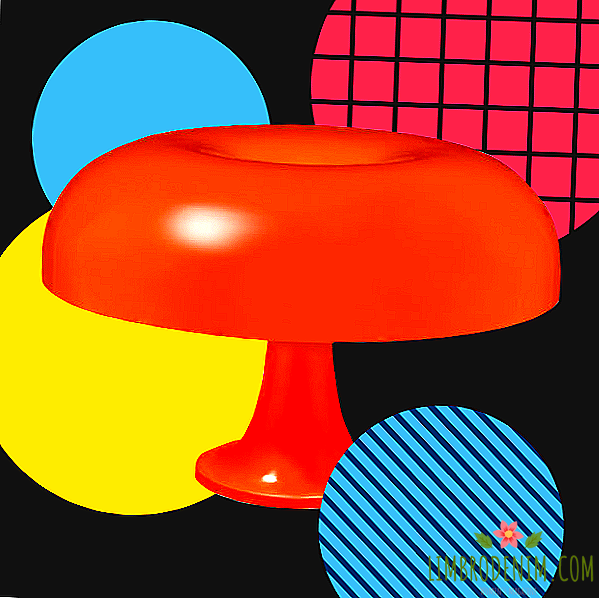Not everything is so smooth: Cons of hair removal and how to deal with them
Text: Margarita Virova
You can treat hair removal differently, But obviously, this is one of the most popular ways to remove hair. By itself, the standard of beauty, where a woman only has hair on her head (and even in strictly designated areas), of course, is evil. But let's not forget that you can choose hair removal at your own will, and not only at the insistence of a partner, a glossy magazine or a gynecologist (this also happens). At the same time, any epilation has limitations and often disappoints those who believe in the advertising myth of Infinitely Smooth Legs. We tell you what to be ready for when removing hair, how to make the procedure as comfortable as possible and to reduce unpleasant side effects to a minimum.

Hair ingrowth
This problem belongs to the category of medical, and it has a name - pseudo-folliculitis. New hairs growing at the site of the remote, or "hemp" cut with a razor, can not break through the stratum corneum of the skin and begin to grow under it, which leads to inflammatory processes. Growing up can be caused by any kind of epilation, so it is better to accustom yourself to accompanying care, regardless of the method chosen - this applies to both women and men. It may also happen that you simply have a predisposition to pseudo-folliculitis: this can be found out by a dermatologist, who will give individual recommendations for skin care.
What to do:
The cause of ingrowth can be dry skin, so you should always monitor sufficient moisture. Regular exfoliation of places that are often subjected to the procedure of hair removal, can also solve the problem or at least reduce the scale of the disaster. Sometimes it is recommended to temporarily replace the usual method of hair removal with any other, more gentle, or even temporarily stop removing hair. If the skin is sensitive, then the intervals between procedures can be increased - the skin will have time to recover. If you prefer shaving, then you should know that shaving hair is on height, and not against: so less injured skin.
There are special cosmetics designed to prevent ingrowth, but they should be selected individually. As a rule, they have very complex compositions, in which there may well be allergenic substances. If you decide to try one of them, carefully analyze the list of active ingredients.
Skin irritation
Another common problem associated with improper procedure or increased skin sensitivity. As a rule, contact methods of epilation cause concomitant damage to the skin and nerve endings, hence the unpleasant redness and rash. Preventing them is much easier than eliminating. If your skin responds with irritation a little more often than always, try to carry out as little as possible traumatic manipulations on it at the same time and equip yourself with sedatives.
What to do:
Avoid mechanical peeling before or immediately after epilation. If you perform the procedure at home, then it is better to do it after a shower or a warm bath - clean skin with open pores tolerates such effects better. After waxing or shugaring, you should not immediately take a bath, as contact with tap water can badly affect the injured skin. If irritation has already appeared, add a few drops of tea tree oil to the moisturizer, which copes well with the role of an antiseptic, but be sure to choose a high-quality oil containing a minimum percentage of cineoleum - it can act as an irritant to the skin and mucous membrane. You can use other antiseptic and sedatives that are suitable for you, but make sure that they do not contain alcohol.
Folliculitis and irritation in men
About precautions for men should be said separately. Male skin is on average thicker and rougher than female skin, moreover, a rare man devotes time to deep cleansing and peeling. If daily shaving is familiar for many people, then those who decide to wax or sugar epilation, for example, back or chest, have unexpectedly hard times: due to the characteristics of perspiration, men's skin is often overtaken by inhuman scales of irritation (simply every injured the bulb turns into a pimple).
What to do:
Do not go for these types of mechanical effects, such as wax and sugar, and turn to contactless methods. After hair removal is really very important to monitor the cleanliness of the skin, since its entire surface becomes open and very susceptible to dirt and penetration. And in the shower you need to get a non-hard washcloth made from natural materials - it will cope well with the necessary peeling.

Bruising
It's pretty silly to point out that the presence of bruising basically means that you are doing something wrong, but nevertheless it is not a rare problem when doing wax or sugar epilation. There are known contraindications to the procedure - these are skin diseases, allergies to the components of the used composition, diabetes. Vessels close to the skin also add risk. The most common cause of bruising is the carelessness of the master, and changing it can solve the problem very effectively.
What to do:
When waxing or sugar hair removal, the skin should be well fixed, and the master must ensure that the composition is applied in an even layer, and be able to remove it from the skin correctly and quickly. If your skin is really extremely sensitive, warn about it. You can not do hair removal after chemical peeling, and it is also undesirable to carry out the procedure on tanned skin. If technically everything was done correctly, and bruises still appear from time to time, this may indicate fragility of the vessels, vitamin deficiencies and other problems that need to be addressed in a complex way, postponing epilation until better times.
Burns
After a properly performed procedure, burns appear infrequently, but sometimes this happens - this is possible after home depilation with the use of cream, and after waxing in the salon. If this happened the first time, then it is reasonable not to risk twice and just in case to refuse the chosen method - probably, it does not suit you. But it also happens that wax burned in a proven place and a permanent master (especially for deep bikinis and other sensitive areas). Feel free to ask to check the temperature of the wax in a less sensitive place and always tell the master immediately if you are hot. Well, you should not say that when home hair removal is necessary to carefully read the instructions and never break it.
What to do:
If the burn appeared after the cream, it means that you just overexposed it. Such products contain alkaline substances that dissolve keratin and thus promote hair removal, but they are not enough to cause serious damage to the skin. Of course, you should not use the cream on areas of skin located close to the mucous membranes. Laser hair removal is based on heat exposure, so it is best suited to those who have dark hair and fair skin. Tanned or dark skin contains a lot of melanin, respectively, the heat it will attract no less active than the hairs, so the risk of burn increases significantly. Burns after epilation should be treated with pharmaceutical ointments, like any other, and also remember that after the laser and photo-epilation at any time of the year sunscreens are necessary.
Pigmentation
The same happens due to incorrect procedure and there are two types. Hypopigmentation, when light spots appear on the skin, remains after burns and abrasions and is removed quite easily by pharmaceutical means. Hyperpigmentation is the darkening of the skin areas on which the procedure was performed, and it can appear after any kind of hair removal, except for old-school shaving. The fact is that during epilation, the upper layers of the epidermis are somehow removed, which leads to an increased sensitivity of the skin to ultraviolet radiation. If you are taking drugs with the same side effect, then double your caution.
What to do:
If it so happens that your pigmentation is part of a permanent program of suffering, then you should pay attention to sugar epilation - the composition almost does not damage the skin, unlike wax. It is better to stay away from a tanning bed after epilation, and when going to the sun, you should use SPF products. Hyperpigmentation can be removed with a course of bleaching agents, and during hypopigmentation, Panthenol or Bepanten will help, which will rather quickly deal with the problem in combination with a gentle peeling.

Hair regrowth between treatments
This is an inconvenience that accompanies any kind of hair removal. The intervals can be different and depend on your personal characteristics: someone grows hair more slowly and the skin remains smooth for two weeks (the chances are increased if you have done epilation from scratch), others have new hair after a few days. In any case, the hairs grow unevenly, and when waxing with wax, sugar, as well as laser, electro-and photo-epilation it is necessary that they are not shorter than three millimeters. In addition, no procedure can be repeated too often. It is best to turn to hair removal every three weeks, otherwise the chance of irritation increases.
What to do:
If this nuance hinders you greatly, get a home epilator, mechanical or photo (no patience is enough for tweezers). You can regulate the intervals between the procedures yourself, and after a while you will get a long-term effect (although this again depends on the characteristics of your body). You do not have to wait for the next visit to the beautician, and many devices are very simple to use, and they pay for themselves faster than salon procedures. Remember that for procedures based on thermal exposure, the perfect combination of dark hair and fair skin.
Photo: 9comeback - stock.adobe.com, exopixel - stock.adobe.com, cristi180884 - stock.adobe.com, Tarzhanova - stock.adobe.com




